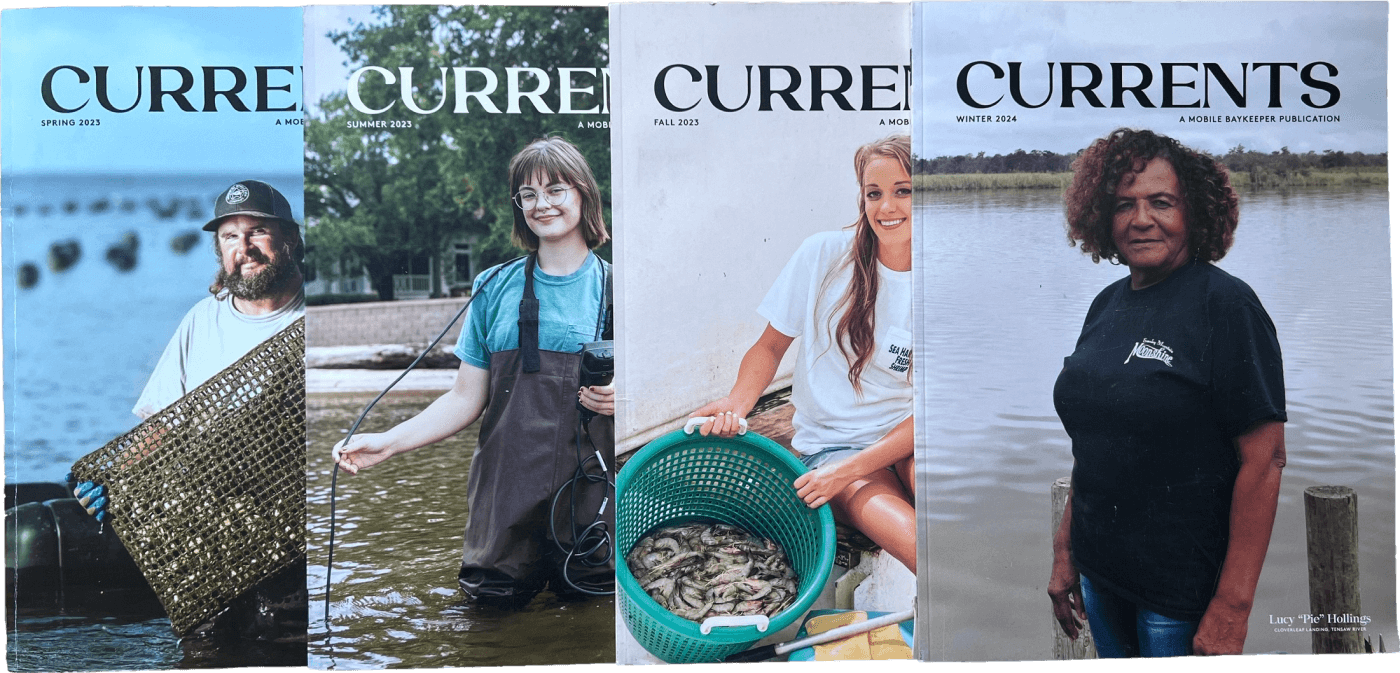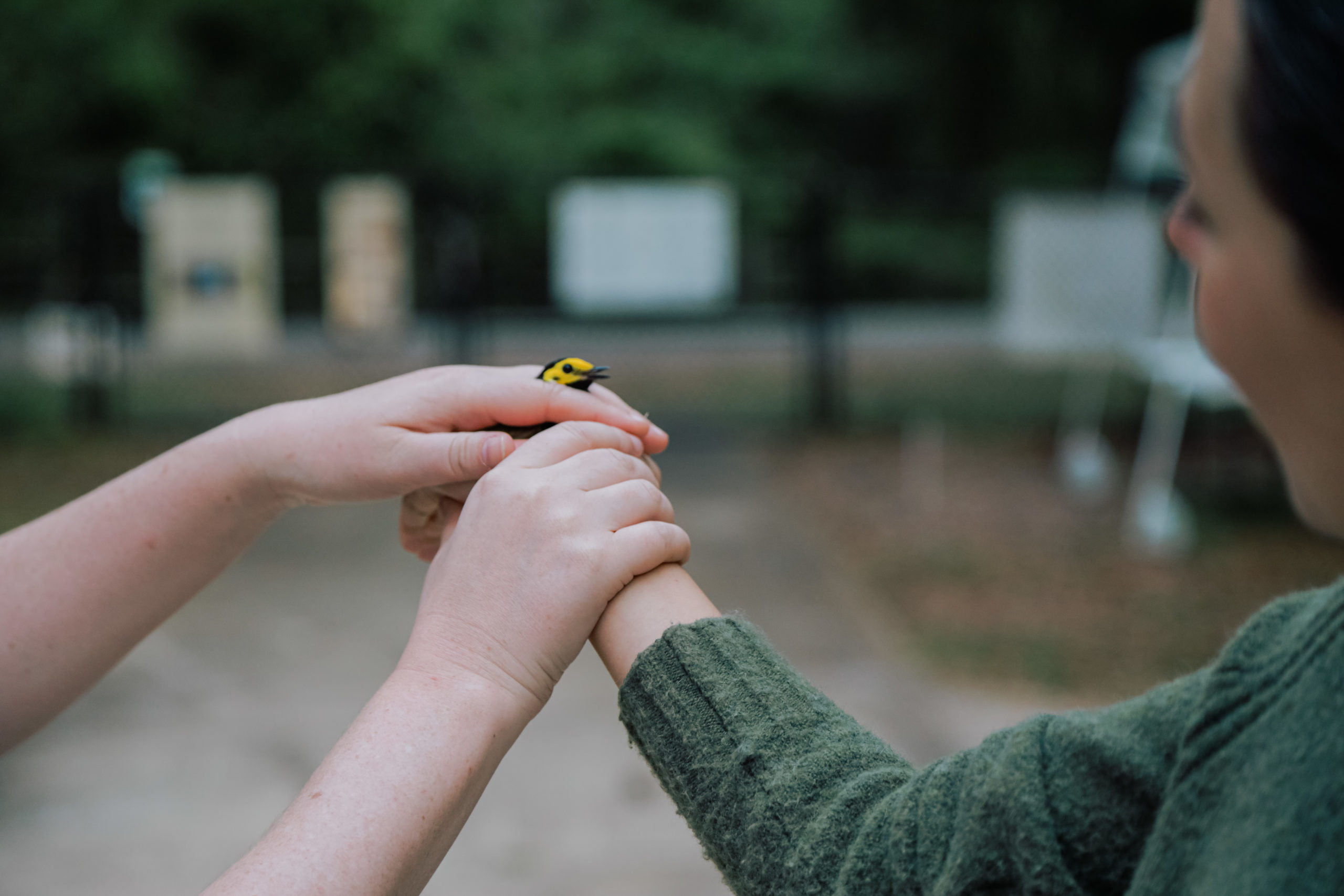
This article is from the summer 2024 edition of Mobile Baykeeper’s print quarterly, CURRENTS. The magazine is mailed to active members who have given more than $50 in the past year. To get on the magazine’s mailing list, donate here.
by Nick Williams | Photos by Courtney Mason Hilley
“Be honest,” my buddy asked me on a duck hunt two seasons ago, “are you hoping for a boy or a girl?”
I was well-practiced in my response. “I just want a healthy kid and momma,” I replied.
“Well, yeah, of course you do. But admit it, you want a little boy to take tromping around in the woods, don’t you?”
I smiled. It’s true that most little girls don’t grow up to be hunters. The number changes a little from year to year, but the last NRA survey I read claimed that only ten to 15 percent of hunters were female. But little girls, in my experience, like tromping around in the woods just as much as little boys. One only needs to read Rachel Carson’s Silent Spring, or Robin Wall Kimmerer’s Braiding Sweetgrass, to realize that any notion of the outdoors being somehow the sole purview of men is ridiculous.
I wasn’t the least bit disappointed when my little girl was born. I don’t know if she’ll take to hunting, but she already loves sitting on her little blanket watching me and her momma fish. She plays with sticks, eats dirt, and takes off in a speed-crawl towards squirrels and ducks. I look forward to teaching her what I know about the world around her; about how deer know which acorns are sweetest, or how catfish hunt for prey in sediment-laden river water. And I’m glad that she’ll have other teachers in the form of her mother and her aunts, all of whom enjoy the outdoors.
One aunt in particular stands out as an outdoorswoman. “Aunt Emma,” soon to be known in academic circles as “Dr. Rhodes,” is an avian biologist specializing in migratory bird research. At only 28 years old, she’s traveled from Panama to Saskatchewan, from Maine to California, conducting her own research and assisting others in theirs. Her PhD work on how mitochondria power the evolution of bird migration has received prestigious awards from both the National Science Foundation and the Society for the Study of Evolution, and she is a co-founder of the Banding Coalition of the Americas (BCA). She became a permitted Master Bander at 24, making her one of the youngest bird banders to ever receive that certification. In 2018, she founded the Mobile Bay Audubon Young Birders club, and she was instrumental in bringing the first Motus tower to the Gulf Coast area.

This tower, made possible by a partnership between Cornell University and BCA, sits atop the Dauphin Island Sea Lab campus. It allows researchers to use radio telemetry to track tagged organisms ranging from insects, to bats, to, of course, birds. This is a huge deal for bird banders working with shorebirds and neotropical migrants that pass through the Mobile Bay area. While the birds have to be trapped “the old-fashioned way” in banding nets in order to fit the tiny radio tags to them, subsequent travels through the area are recorded automatically in a roughly nine-mile radius from the tower, allowing researchers to accumulate large amounts of data with much more reliability and less effort.
Emma humbly waves away compliments, insisting that she’s a small player on many big teams. But she’s rubbed shoulders with many “big-leaguers” in the scientific community. She’s banded Saw-whet Owls with naturalist and author Scott Weidensaul; was mentored by the founder of the Hummer/Bird Study Group, Bob Sargent; and has even had the chance to reminisce about childhood experiences on the Gulf Coast with the legendary E.O. Wilson. Much like this famous entomologist, Emma’s fascination with the natural world started small. She was, in her own words, “the outdoors kid” in the family.
“I just kinda stumbled into birds,” she says. “I would notice a bird out in the yard, and I’d ask my mom, ‘What’s that?’ And she’d answer, ‘That’s a bluebird.’ The next day I’d see another, different bird, and I’d ask again, ‘What’s that one called?’ ‘Well, a bluebird!’ she’d say. But they obviously weren’t the same bird at all! So that made me curious, and the next time we went to the Foley Public Library I came out with an arm full of birding books. And I learned that one bird was, of course, an Eastern Bluebird, and the other ‘blue bird’ was a Blue Jay.”
“It was a big deal to me, learning that birds had names beside ‘blue bird,’ ‘red bird,’ or ‘yellow bird,’ she laughs. And in those stacks of books I’d check out every week, I eventually found one that I could more or less understand. It talked about John James Audubon, and how he banded phoebes with ribbons to prove that they returned to the same nesting sites year after year. That book introduced me to the word ‘ornithologist,’ and I remember eventually starting to think to myself, ‘Okay … ornithologist … that’s what I wanna be.’”
She continues, “That all started when I was maybe six or seven. When I was 12, my dad took me on a bus trip that was part of the Alabama Coastal BirdFest. It ran from the Five Rivers Nature Center down to the bird banding location on Fort Morgan. And on that trip, our guide was ‘Mr. Bill,’ who I later found out was Dr. Bill Summerour, a prominent ornithologist and a really nice, humble guy. And I guess since I was the youngest person on the bus by quite a long shot, I kind of stood out, so Bill talked with my dad and me a good bit as we rode.”
“I didn’t realize this until years later, but Bill pulled Bob Sargent aside when we got to the site, and kinda put the bug in his ear to let me hold and release one of the banded birds. So Bob at one point hollers out, ‘Where’s the girl with the star jacket?’ and hands me a Yellow-Rumped Warbler. I’d never experienced anything like that before, and I think that was what really ‘set the hook’ for me. I had no idea that there was a birding community, so seeing all of the banders and birdwatchers that day was awesome.”
(Click photos to enlarge)

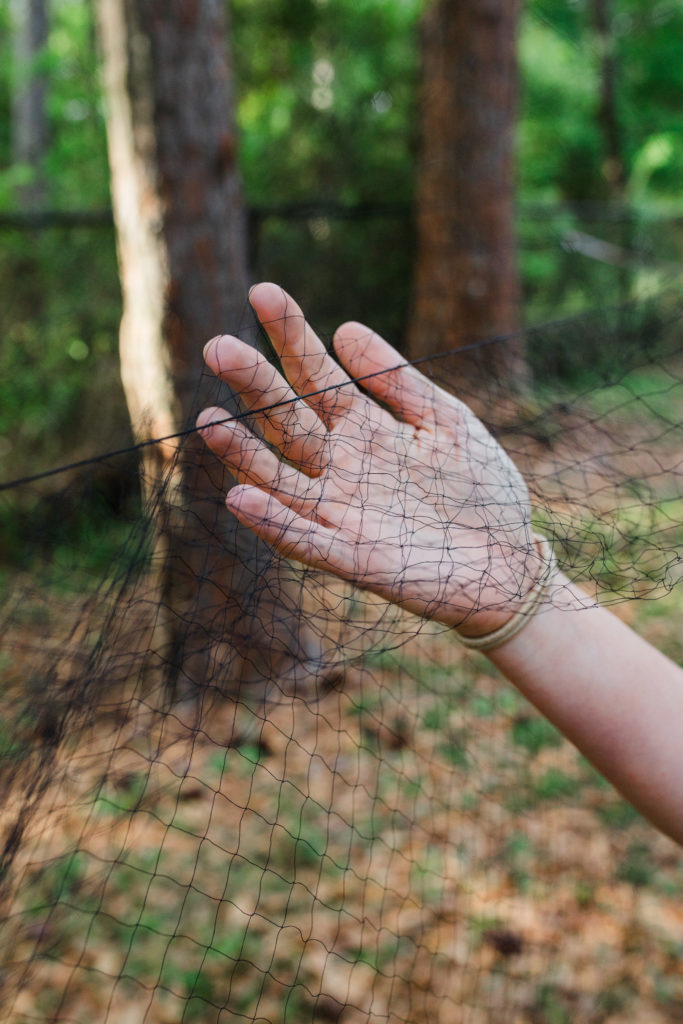
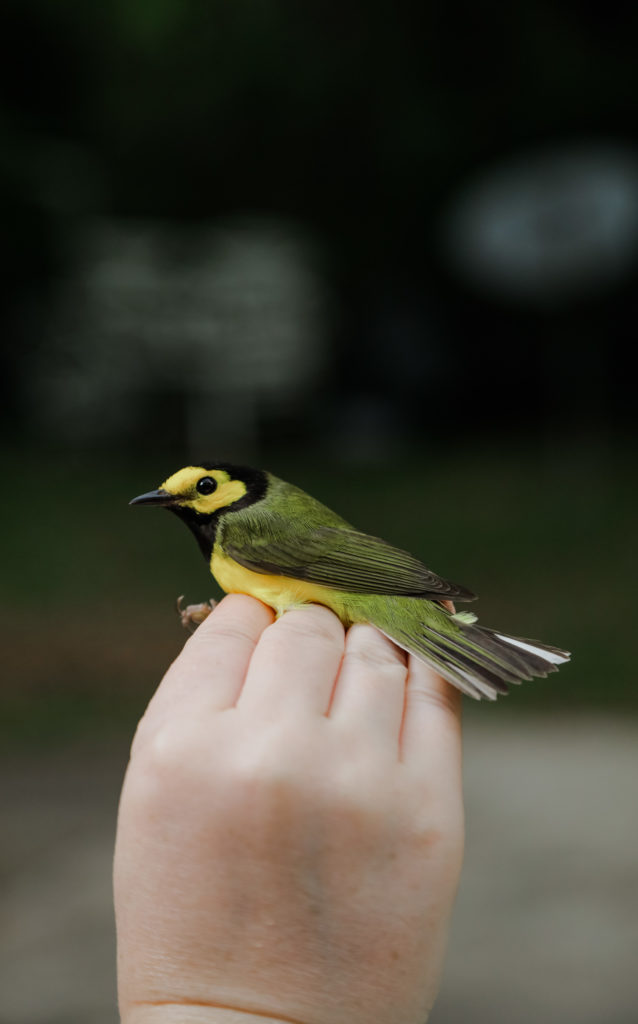
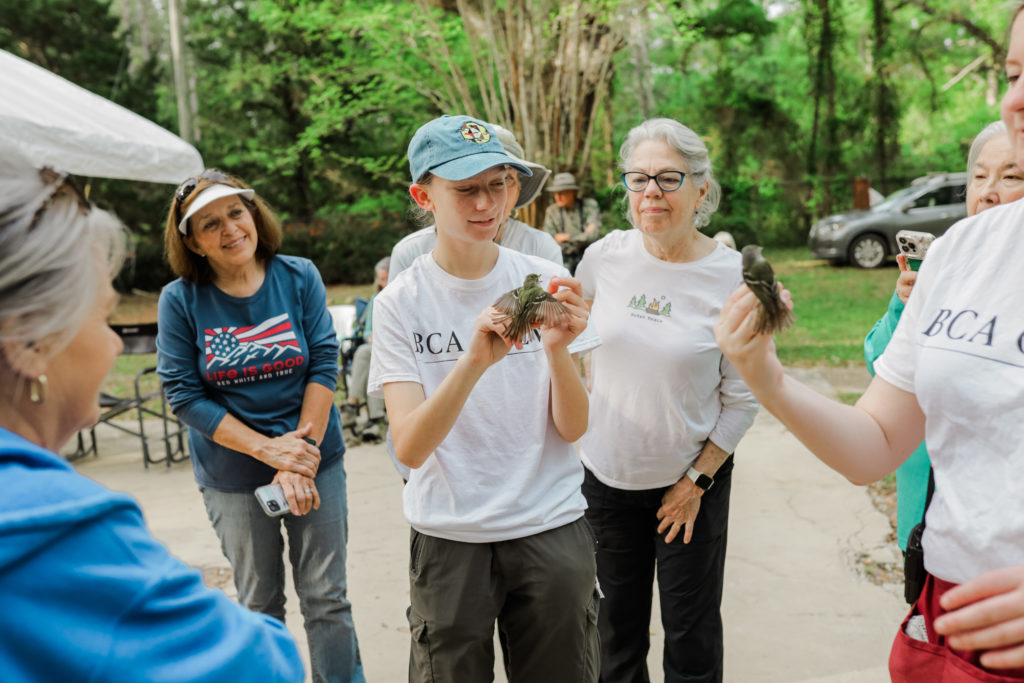
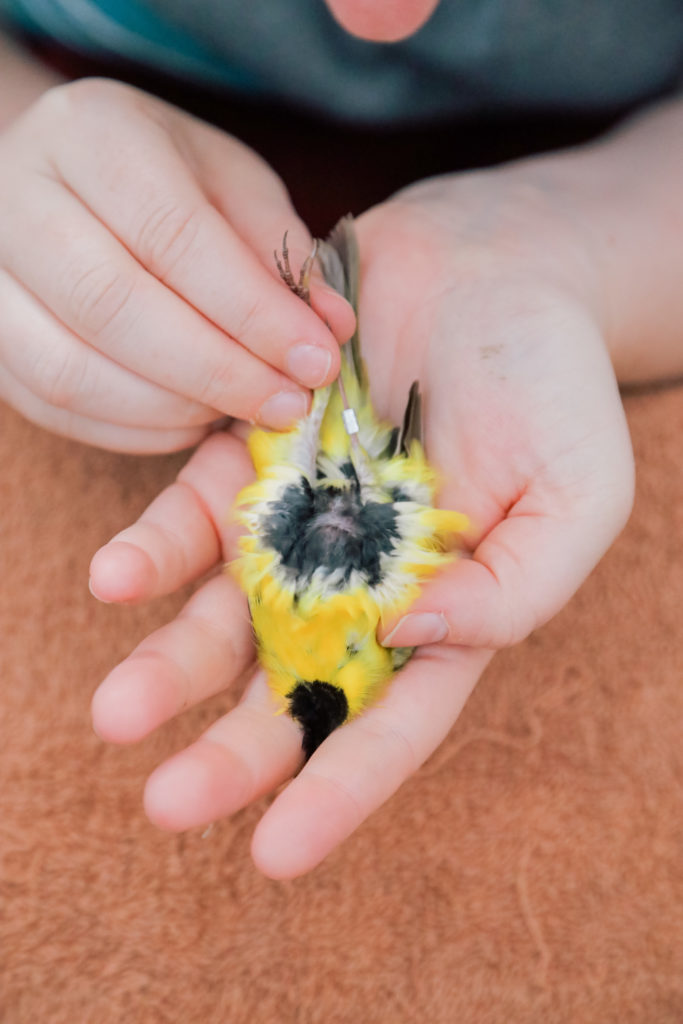
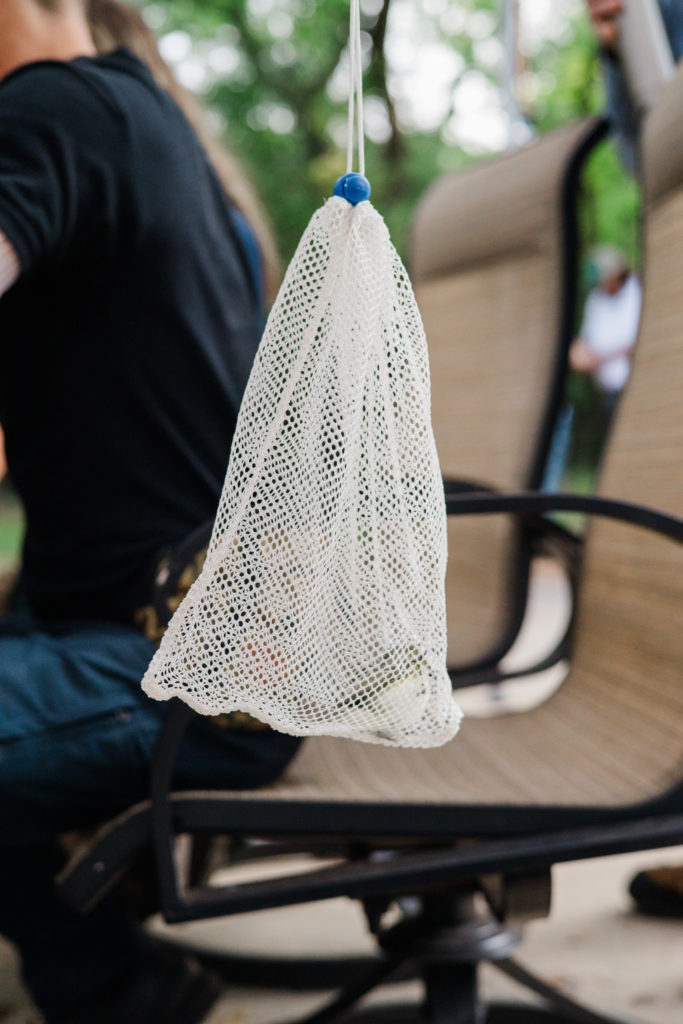
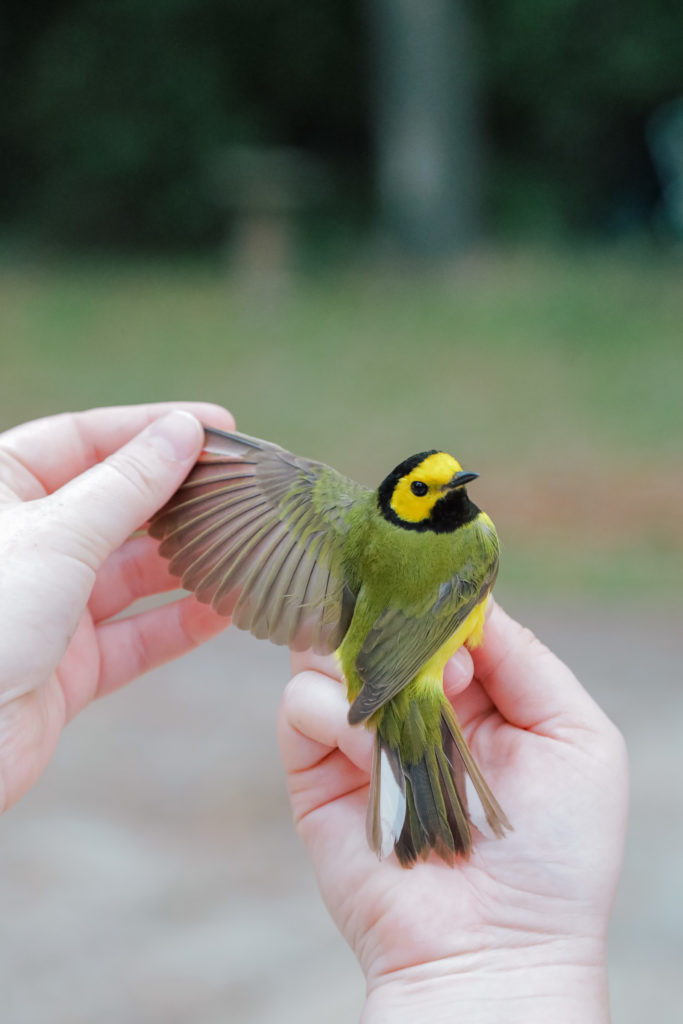
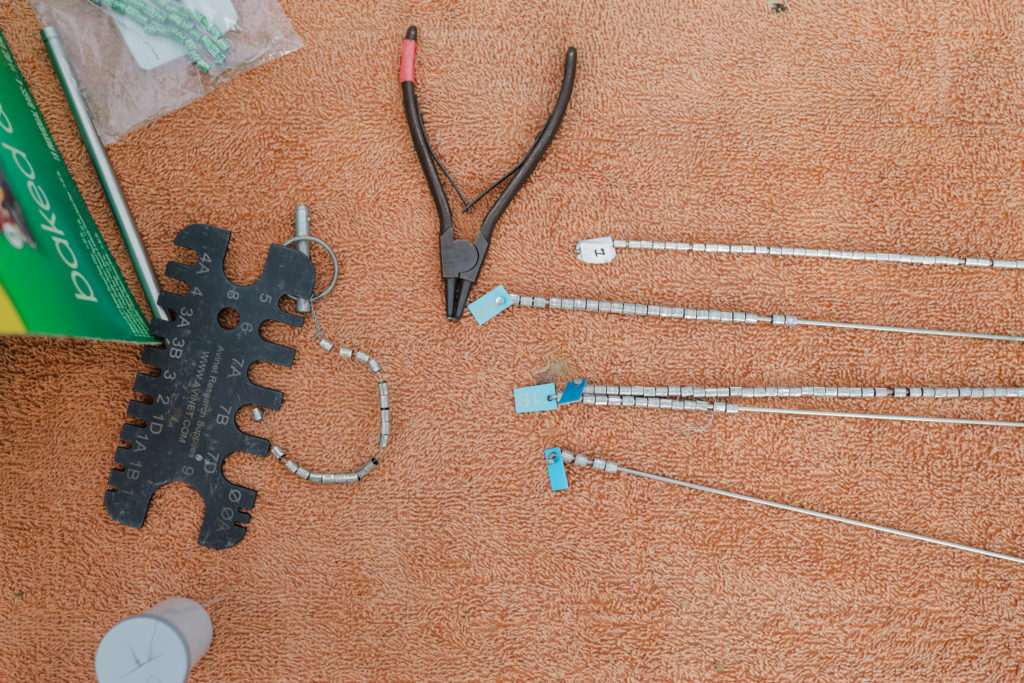
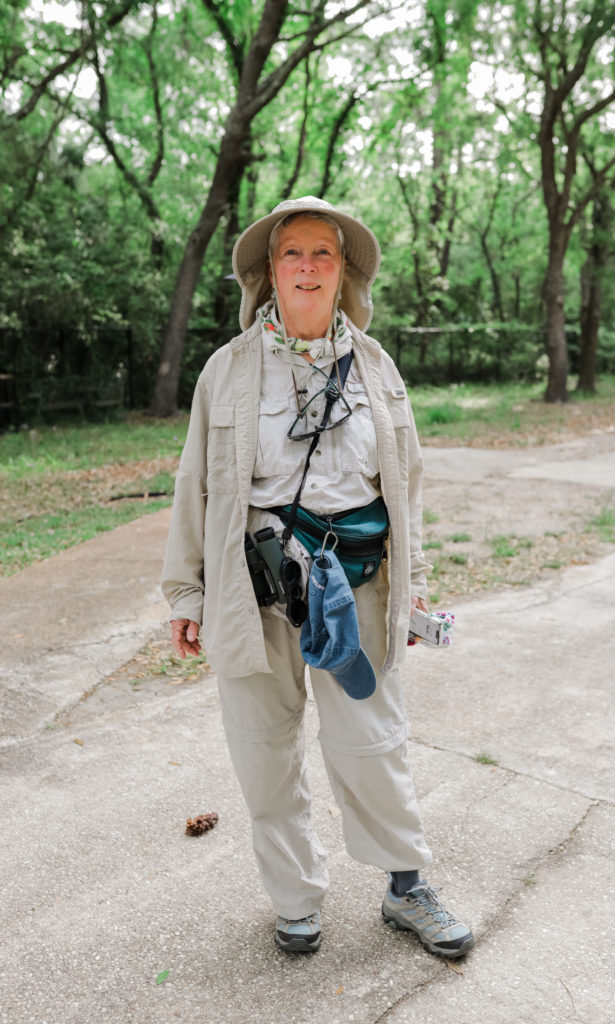
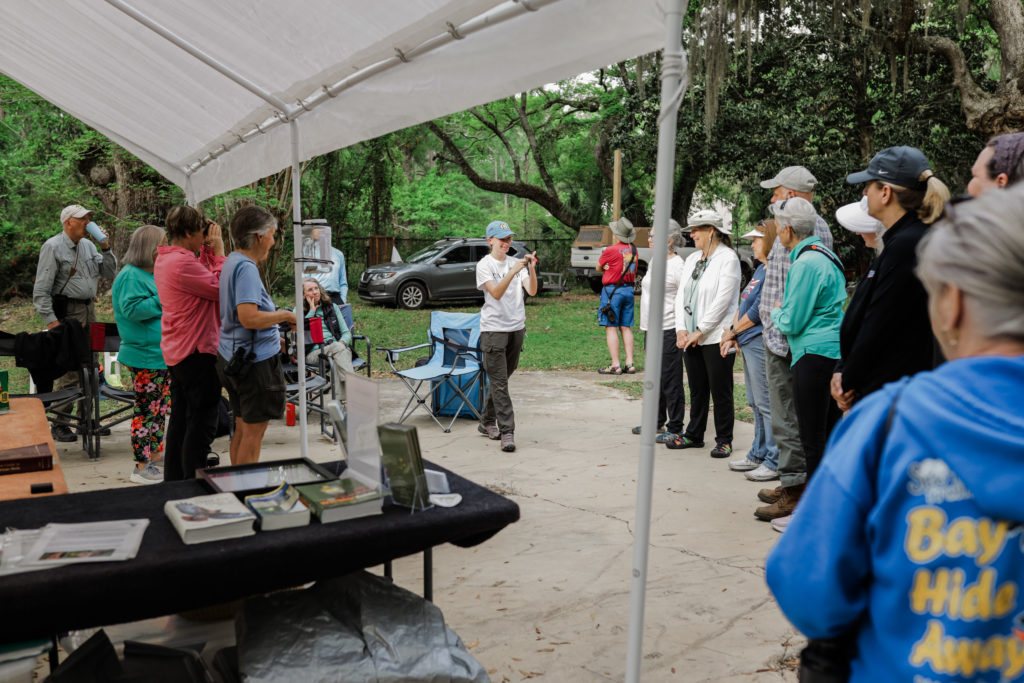
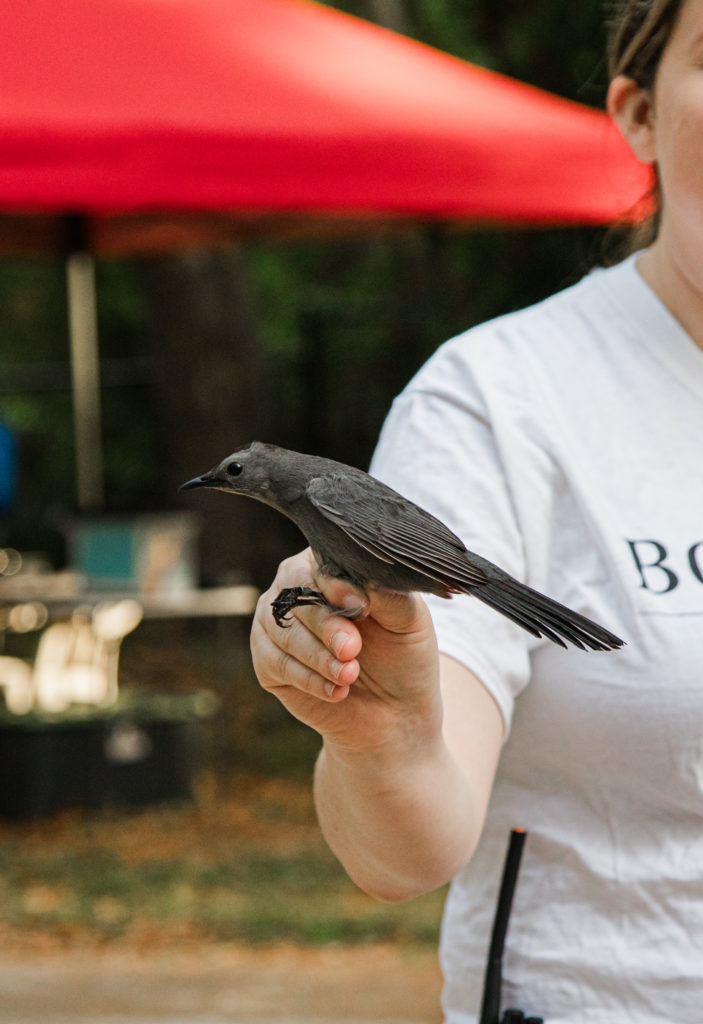
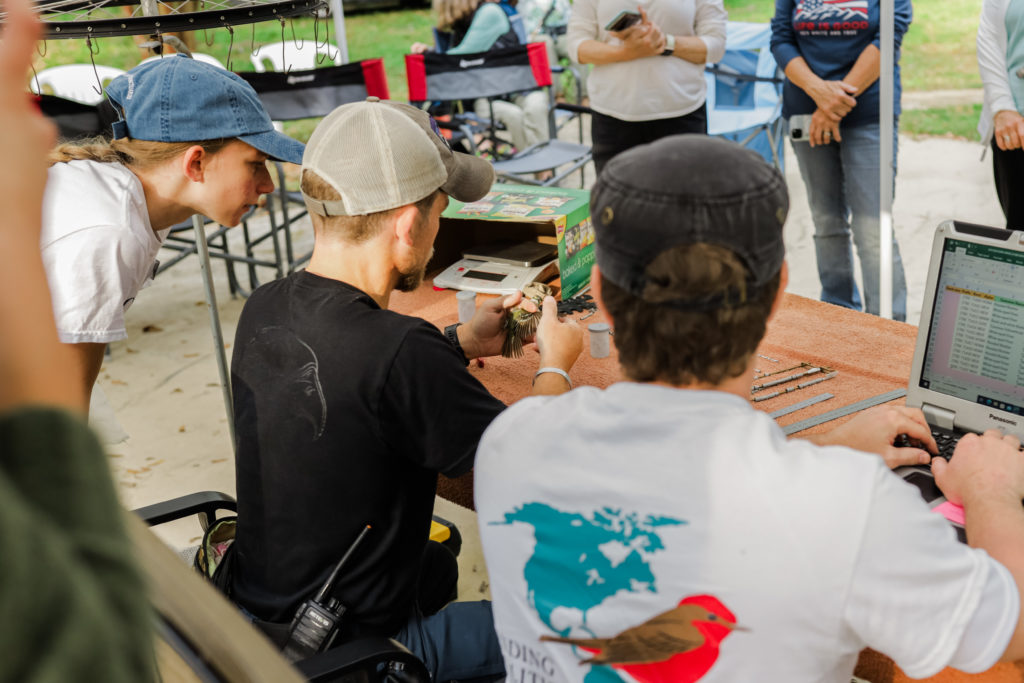
“I knew I wanted to be a part of that. I got to go on several birding trips with Dr. Summerour after that, and at 14 I told my parents that I wanted to volunteer. So I basically started showing up at the station and just hanging around until I think Bob basically decided, ‘Well, I guess I’ll put her to work!’ And he started training me, and that was the beginning of me going down this crazy path.”
Alabama leads the nation in many categories when it comes to biodiversity, and the Fort Morgan peninsula and Dauphin Island form a critical part of the migration route for hundreds of neotropical migrant species. Emma didn’t realize it at first, but she was in one of the best locations in the nation to become familiar with a huge percentage of American birds.
“I’m probably biased because of the emotional connection to the area,” she admits, “but Dauphin Island and Fort Morgan are still my favorite places to go birding. We have around 400 species of birds in Alabama, and you can see almost all of them there. You have maritime forest habitat, so you get all of the land bird migrants, but then you also have the beach, so you get shorebirds and seabirds as well. And then there are pockets of mixed swampland, so overall it’s just an incredibly diverse habitat right along a migration route. You really never know what you’re going to see.”
But these coastal habitats are at risk from “death by a thousand cuts” as more and more of the area is developed.
“These areas are highly dynamic,” says Emma, “and change is constantly occurring. Some of these changes are natural, like hurricanes. But you also have all of the changes from human impact. The land around Mobile Bay and the rest of the coast is highly in demand for many reasons. And it’s a difficult challenge to find balance between utilization and conservation. How do we preserve this habitat while simultaneously enjoying the coastal area?”
“Birds are an indicator of how well or how poorly your habitat is doing,” she continues. “If you have species that are no longer able to persist in an area, then that’s an indicator that something is seriously wrong with that habitat. I think it’s really important that we get the general public on board with the idea that even if you’re not a birder, it’s mutually beneficial to you that habitat is preserved for birds and other species as well.”
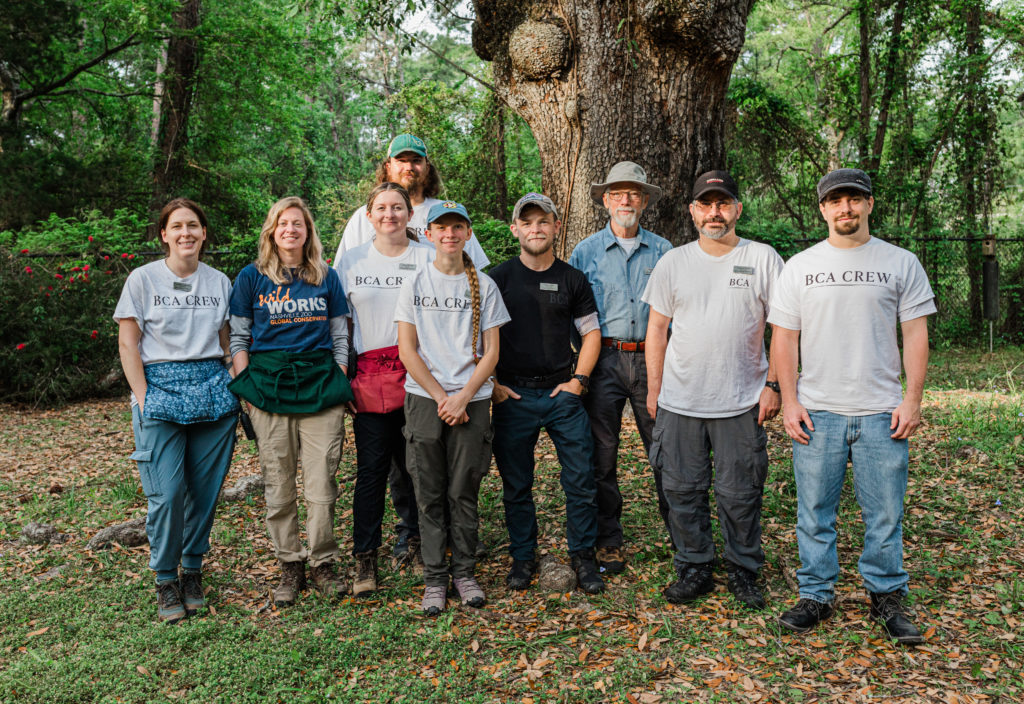
Emma continues the traditions of her mentors, and engages regularly with the public to do her part in making sure that people see for themselves what’s at stake if we can’t strike a balance between development and conservation. While public attendance at bird banding locations isn’t always possible due to the fragility of equipment, coastal habitat, and the birds themselves, BCA regularly invites the public to watch science in action at their banding sites on the Alabama coast.
“I think what’s most rewarding for me are the moments where I get to facilitate interactions between birds and people,” Emma says. “I’ve had scenarios where somebody starts off completely unaware of birds, or they just don’t care, or if they’re little kids they may even be scared of them a little! And then they see these birds up close, they get to hold them, and the next thing you know they’re coming back the next year, and they’re telling us, ‘Hey, y’all changed my life. I have a bird feeder now, and I love birds.
I notice birds more, and I’m getting outdoors more because of birds.’ They’re paying attention to the world around them, and they’re telling other people about what they’re seeing. To me, that’s highly rewarding.”
Emma’s dedication to conservation and her ability to inspire others serves as a powerful reminder of our responsibility to protect our Gulf Coast for future generations. As I mentioned at the beginning of this article, I’m glad that my daughter is blessed with an aunt who is so deeply knowledgeable about the natu- ral world. It’s my hope that with the help of mentors like Aunt Emma, she’ll grow up to be not just a lover and consumer of the outdoors, but a steward and advocate for it. As the human population around Mobile Bay continues to grow, it’s my firm belief that the security of our coastal habitats depends on kids who understand and appreciate the other species that share them with us.
